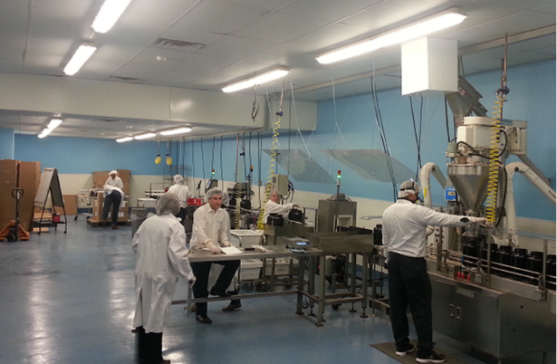6 Proven Ways to Boost Your Manufacturing Performance
If you are a regular reader, you might have examined two important components of growing a successful business in a technology-driven industry: a strategic analysis of your process and current technologies and the systems and practices associated with new product development. This month, we turn our attention to the methods for enhancing your manufacturing performance.
Improvement usually requires innovation, and innovation is often the distinguishing factor that separates the leaders from the followers. Below are six steps for enhancing your manufacturing performance:
- Define areas requiring improvement
- Establish goals of improvement
- Conceptualize potential solutions
- Test or simulate alternative solutions
- Build initial engineering evaluation
- Implementation and phasing
When addressing step 1, it is crucial to define and examine not only the areas requiring improvement, but also what may drive the need to improve. These include:
- Quality controls
- throughput or process refinement
- Reporting
- Traceability
- Enhanced manufacturing process
- Reduced rejects and waste
- Sustainability
- Safety
- Labor costs
For a manufacturer in Orange County, NY, a thorough examination of their entire facility’s manufacturing performance led them to a nearly five-year period of continuous improvement, culminating in a cash for stock acquisition last year. Having enhanced their manufacturing capabilities tremendously, they are operating at a substantially higher level of efficiency, enabling them to attract and service large original equipment manufacturers.
 The most extensive enhancements were made to their primary production line. First, mismatched equipment was refurbished, debugged, or replaced. These included an automated filler scale, cappers, and induction sealers that ran continuously without alerting anyone. After alarms were installed for the sealers, sensors were installed at strategic points to allow the uninterrupted continuous flow of product and automate the fill and weigh process steps. When the heat shrinking tunnel at the end of the line was leaking and in disrepair, it was removed and replaced with heat guns. This innovative, yet common sense solution is still in place today, and the line is now a fully automated production line that requires approximately one-third of the labor compared to other industry installations.
The most extensive enhancements were made to their primary production line. First, mismatched equipment was refurbished, debugged, or replaced. These included an automated filler scale, cappers, and induction sealers that ran continuously without alerting anyone. After alarms were installed for the sealers, sensors were installed at strategic points to allow the uninterrupted continuous flow of product and automate the fill and weigh process steps. When the heat shrinking tunnel at the end of the line was leaking and in disrepair, it was removed and replaced with heat guns. This innovative, yet common sense solution is still in place today, and the line is now a fully automated production line that requires approximately one-third of the labor compared to other industry installations.
Having identified areas of improvement in reporting and traceability, software engineers installed a database to achieve the necessary level of control documentation. Unlike the old structure which was comprised of a series of simple spreadsheets, this system describes and records every aspect of the formulation process, from the weight and moisture content to the mixing instructions, tabulating information into a database easily accessible and updated by all employees.
Additionally, several machine upgrades were performed to improve product flow and efficiency. Industrial steam dryers were installed to replace three individual PID controllers, collecting data every day on the ovens’ humistats and temperature levels. The new system has created consistency from product to product, eliminating burn problems and overheating. Meanwhile, a new lubrication system for a blender was required as workers were unable to effectively grease the bearings. Because the bearings stood behind the tires, staff was forced to remove the tires from the axles on which the vessels sat and rotated, which often destroyed the axles. After purchasing custom-made split bearings made of aircraft green aluminum that can be replaced with the axle in place, the workers are no longer required to remove the wheels or tires. Implementing these enhancements, which also included new motorized lubricators for an automated greasing process, required a significant up-front investment, but their return has more than made up for it. They plan to make those same improvements to two other blenders in the facility.
Last, but certainly not least, large worker and machine platforms were designed and constructed to address workplace safety concerns, and to enhance space utilization and maximize efficiency. Several operator platforms were designed and erected to allow workers to safely load product into the machines. Safety laser light curtains were installed on a large blended and two rotary mixers to stop the machine at any point in its process and prevent injury when workers are in close proximity.
Ultimately, after following the six steps for enhancing their manufacturing performance and addressing all areas of improvement, this world class manufacturer is operating at a substantially higher level of efficiency and are able to respond quickly and flexibly to customer requirements as a complete solution provider. With complete production lines fully automated and a continuous flow operation in place, they have significantly reduced labor and expenses. Process repeatability and product quality levels have dramatically improved, reducing lead times and improving customer shipment performance. All in all, the enhancements have their products looking more attractive to current market needs.
Stay tuned for Part IV, the final installment of “Bringing Technology to Your Business” in the May issue of our newsletter featuring better business management through custom design software and off-the-shelf software. For more information, please contact Business Development Advisor, Ralph Brown, at 914-393-9876, or ralph.brown@hvtdc.org.